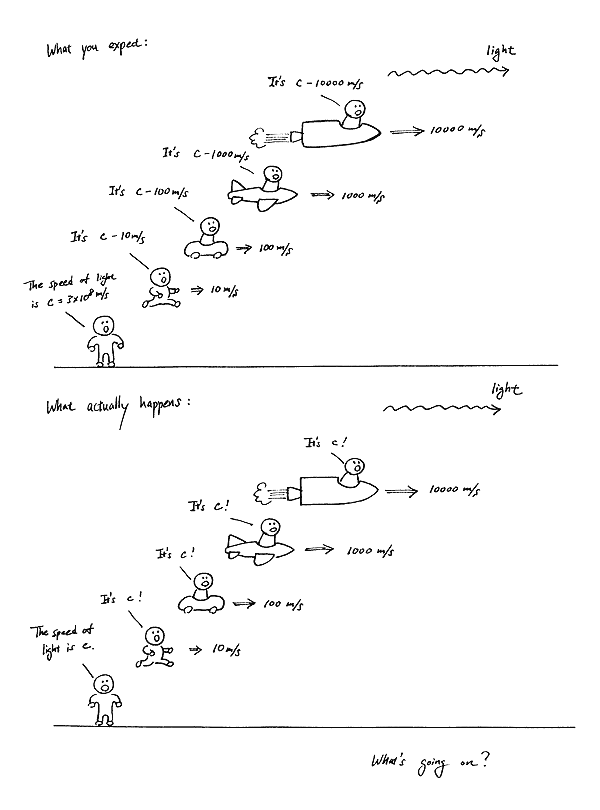

|
College of Science Physics Dept Tatsu Takeuchi Special Relativity Lecture Notes |
 1
2
3
4
5
6
7
8
9
10
11
12
13
14
15
16
17
1
2
3
4
5
6
7
8
9
10
11
12
13
14
15
16
17

7. Some HistoryNewton discovered his laws in the 17th century. Using Newton's laws, physicists in the 18th and 19th century were able to predict the motions of the planets, moons, comets, cannon balls, etc. In the later half of the 19th century, however, Maxwell discovered the equations, which now bear his name, that govern the behaviour of electricity and magnetism, the basis of all modern technology. In particular, his equations predicted that electromagnetic waves propagate at the speed of light c=3×108m/sec, establishing that light was in fact a form of electromagnetic radiation. Unlike Newton's equation, however, Maxwell's equations were not invariant under the Galilei transformation. This is evident from the fact that Maxwell's equations predicted the speed of light. But the speed of something depends on which inertial frame you are observing it from. So Maxwell's equations could only be correct in one particular inertial frame! This did not go well with the belief that the laws of physics should be the same regardless of which inertial frame you were making the observation from. To overcome this difficulty, physicists decided that light had to travel through a medium which they called ether, just like sound had to travel through air. The speed of light predicted by Maxwell's equations was interpreted as that relative to ether. So if the speed of light you observe is different from that predicted by Maxwell, it would NOT mean that the laws of physics is different in your inertial frame from others. Your inertial frame is simply moving relative to ether! About a hundred years ago, a famous experiment was conducted called the Michelson-Morley experiment which measured the dependence of the speed of light on the speed of the observer. To everyones surprise, it turned out that the speed of light was always the same no matter what the motion of the observer was! 
This was a very peculiar situation indeed. Physicist were trying to come up with a theory that explained why the speed of light could be different for different inertial frames but the Michelson-Morley experiment showed that that was not what they should have been worried about. The puzzle now was: how could the speed of light be the same regardless of which inertial frame you were in? It was Einstein who, in 1905, pointed out that the only way to understand this was to change our notion of simultaneity. This was his famous special theory of relativity.
|